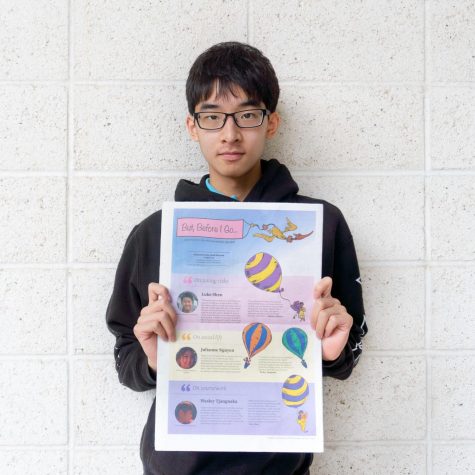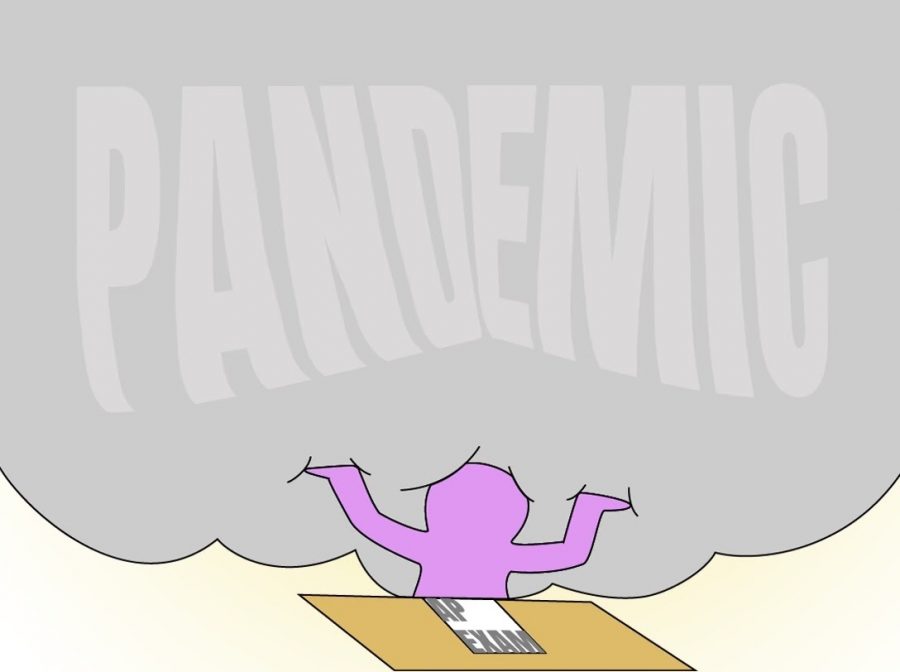Equity Remains Key to 2021 AP Testing
The COVID-19 pandemic has only served to exacerbate socioeconomic disadvantages for students, as was made clear by last year’s AP testing missteps. As AP season approaches in May, measures must be taken to ensure that external impacts on students’ performances from slow Internet connections, disabilities, or family responsibilities are minimized.
With the College Board discontinuing SAT Subject Tests on Jan. 19, students’ means of demonstrating their academic strengths have undergone a permanent shift towards other factors, among them the Advanced Placement (AP) tests. However, a failure to accommodate socioeconomic and physical disparities hindered efforts to test equitably during the College Board’s 2020 administration of the APs.
Though the online system also had several benefits of its own such as a shortened exam, a need for flexibility and change, instead of copying last year’s test plan verbatim, is evident for testing this May.
At Portola High, AP courses have been rushing to get through large amounts of material while simultaneously navigating hybrid learning, and AP Physics 1 is no exception. Despite the College Board announcing the elimination of three units from the AP Physics 1 exam in December, the announcement of these changes were not in time to avoid damage, according to AP Physics 1 teacher Christian Quinteros.
“At the beginning, it felt like we were rushing through our first four units, and it actually doesn’t just impact our teaching, it also impacts the students, because it puts a lot more work on their plate, since they’re going through so many concepts so quickly,” Quinteros said. “On one hand, I wish that they had told us earlier, because that way we could have spaced out our units throughout the whole year, and then on the other hand, they did end up removing a lot of my favorite topics of teaching.”
Though AP Physics 1 is well-known for covering many rigorous topics in a short amount of time, similar expectations await students for the 37 other AP tests.
According to sophomore David Kim, who took the AP Biology exam last year and plans to take the AP Human Geography exam this spring, there is potential for the College Board to make its various test forms more balanced in terms of their content.
“I think the main concern I had with the AP exam, along with other people, is that there were a lot of different forms that people had to take, but certain forms were significantly easier, especially in the AP that I took, and some forms were significantly harder,” Kim said. “Although I understand that the College Board is trying to prevent cheating during the AP exam, I think that making it so that there were multiple forms that had varying levels of difficulty and different units, I believe that was a detriment overall to students.”
However, a more profound form of inequity, and the most difficult to address, also pervaded the taking of AP exams in 2020. An open letter to the College Board published in the Washington Post before the administration of AP exams in 2020 asserted that the organization’s testing procedure hindered students who lacked the ability to take the test rapidly as a result of disabilities, inadequate Internet access, or other factors.
Unfortunately, the College Board left their testing procedure largely unchanged after the letter’s publication. After a cascade of further issues, including the College Board failing to release information about testing accommodations until two weeks before the first test dates and provide support for students struggling to upload their responses on test day, a class-action lawsuit against the organization was filed in May.
To avoid repeating 2020’s various missteps, the inextricably linked problems of test accessibility and testing infrastructure must be swiftly addressed. Providing an equitable way for students to take the test despite socioeconomic disadvantages, including slow internet access and family responsibilities as outlined by the letter, involves the need to include different testing options based on one’s family situation.
“I think they should have more centers or keep certain schools open and act as test centers but give people the option to stay at home and take their test as they did before,” junior Tiffany Park said. “We’ve been doing distance learning now for over a year, and our school has been very adaptive whether it’s been giving people laptops or the city giving WiFi and internet.”
At the same time, allowing too many options to suit students’ needs would only serve to add to confusion, disarray and ultimately a less streamlined testing experience on all fronts, something that, according to Quinteros, should be avoided.
“In terms of students having the choice of which kind of format they want to take, I think it’s always important to give students choice in terms of how they do things,” Quinteros said. “However, I do see a struggle in terms of the administration side: having students coming in in-person, making sure that COVID regulations are obtained when they’re taking those exams in-person and also just having people moderate students while they’re taking the online version.”
Overall, whichever test format — in-person, online or both — College Board ultimately pursues for the AP tests this school year, a core principle necessary to improve on last year’s subpar testing experience is to secure flexible options for students to demonstrate their academic interests and abilities.
Your donation will support the student journalists of Portola High School. Your contribution will allow us to purchase equipment and cover our annual website hosting costs.

Emma Haag is the 2021-2022 Sports Editor for the second year, and it is her third year as a part of the Portola Pilot. Emma has a strong interest in sports...

Justin Tang is the Portola Pilot’s Back Page Editor for the 2021-22 school year, his second and last on the team. Throughout the year, he’ll make sure...

Kelthie Truong is a Co-Managing Editor for the 2020-21 school year, her second and final year with the Pilot. When she’s not in the newsroom, you can...





